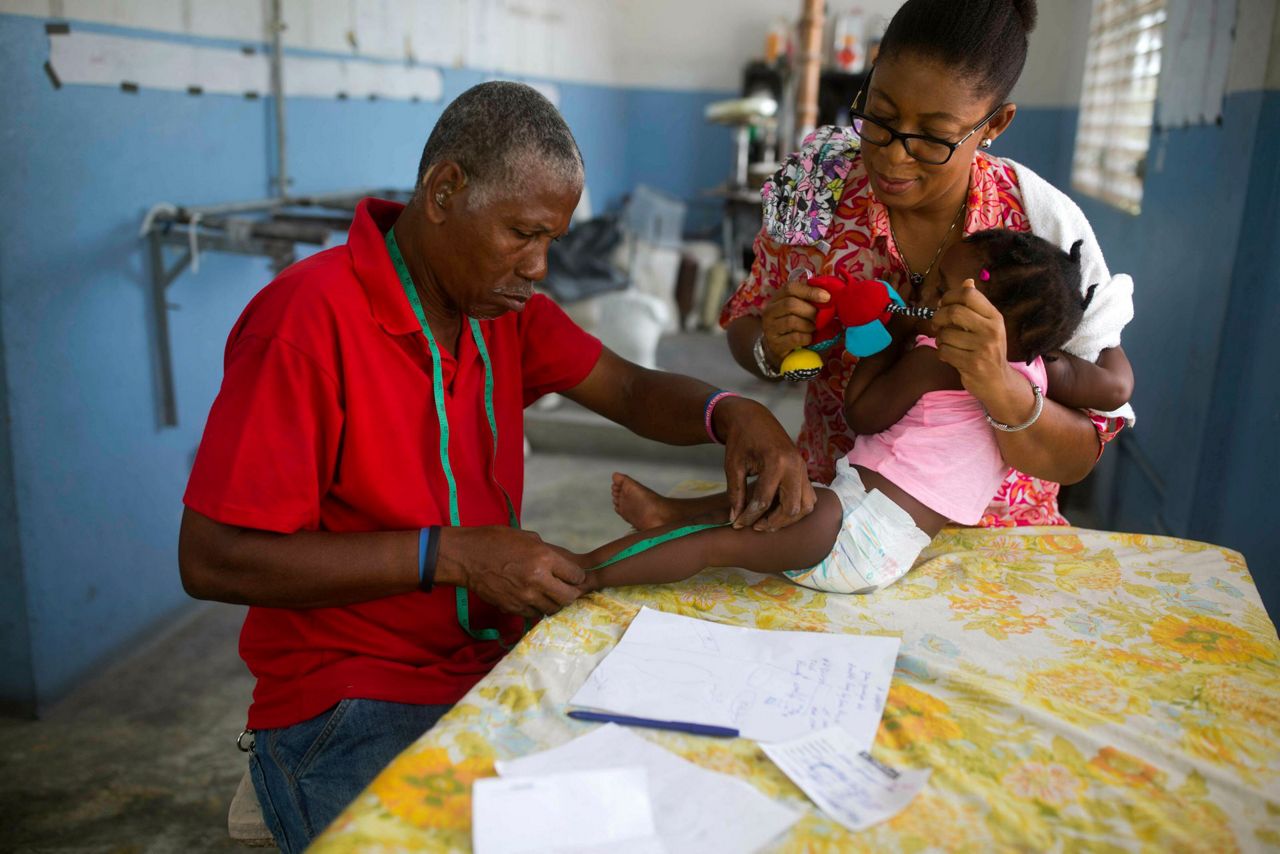PORT-AU-PRINCE, Haiti (AP) — Wilfrid Macena was a welder who built gas station tanks for a living when the devastating 2010 earthquake toppled a wall at the garage where he worked and crushed his right leg.
He was unable to reach a hospital for seven days and his knee became infected, forcing doctors to amputate most of his leg. Several weeks later, he came to an institution run by Haiti's Episcopal Church in downtown Port-au-Prince where a small group of disabled workers were fitting victims with prosthetics and received his first artificial leg.
"It's like I got a brand new life," he recalled, adding that one of the workers at St. Vincent's Center convinced him to join their team, assuring him that it was similar to welding.
In July 2010, six months after the earthquake, he built his first prosthetic — a job that took him three days.
Now, nine years and more than 3,000 prosthetics later, he's still at it, and it takes only four hours. Most of those have gone to people like him who lost a limb in the magnitude 7.0 earthquake estimated to have killed 300,000 or more.
"We're still seeing new patients," he said, adding that an elderly woman who lost both legs in the earthquake recently came by the center. "She wants to move, go to church."
The workers at St. Vincent's Center were all taught by 60-year-old Emmanuel Celicourt, who is unable to speak and has been working at the center for decades. Overall, they have made some 8,000 prostheses since the quake, although now only about 15 percent of people seeking help are earthquake victims.
Macena said being an amputee helps him relate to patients and inspires confidence in them.
"People understand me better than someone who has two legs," said Macena, who also is captain of a soccer team and has taught athletes how to play with crutches.
He recently tended to Natasha Guillaume, a 9-year-old girl who needed a brace after she was pushed at school, fell and injured her leg. He helped lift her onto a bed fitted with a sheet of faded yellow flowers as she grimaced.
"I was crying at night because of the pain," she said, adding that she wants to be able to run again with her friends.
The center first began providing prostheses in the 1950s, sometimes at no cost depending on the needs of a person, said the Rev. Frantz Cole, spiritual director of the center that operates a school for disabled children, a medical clinic and a brace shop where the prostheses are made.
"We try to provide service mostly to those who have nothing," he said. "When someone gets amputated, he thinks that is the end of his life. ... But (a prosthesis) is like a new beginning for a patient."
Copyright 2019 The Associated Press. All rights reserved. This material may not be published, broadcast, rewritten or redistributed.
















